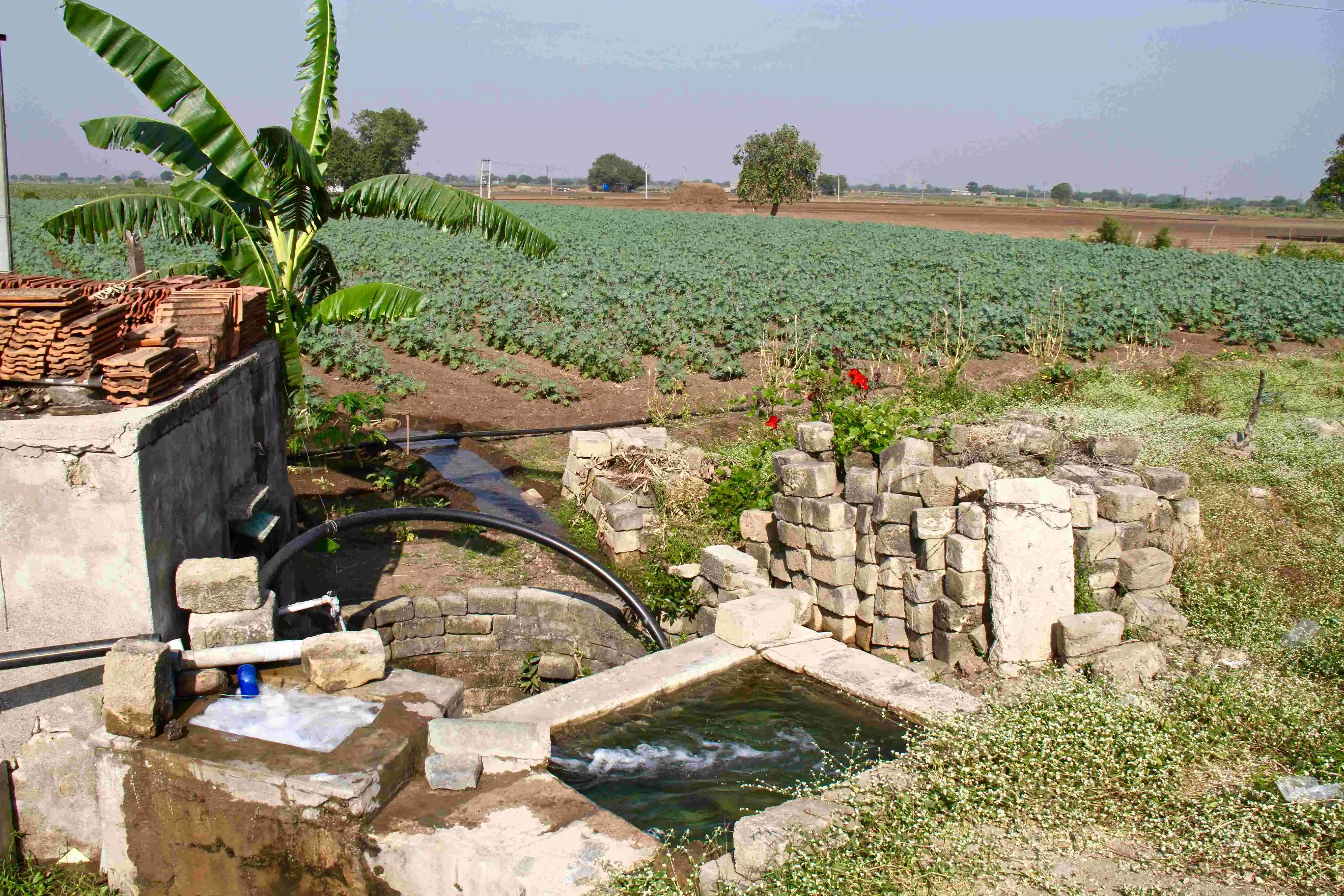India Consumes A Quarter Of The Groundwater Extracted Globally: CSE Report
Rajasthan, Haryana, Uttar Pradesh, Madhya Pradesh, and Karnataka — which comprise more than 25 per cent of the country’s land area — show huge stress in groundwater reserves. In Delhi, Haryana, Rajasthan and Punjab, extraction of groundwater is more than their annual recharge.
 गाँव कनेक्शन 23 Aug 2023 5:41 AM GMT
गाँव कनेक्शन 23 Aug 2023 5:41 AM GMT

The report notes that more than 60 % of India’s population lives in rural areas and heavily depends on groundwater-based sources.
At just over 260 cubic kilometres withdrawal per year, India is said to use one-fourth of all groundwater extracted globally.
The states of Rajasthan, Haryana, Uttar Pradesh, Madhya Pradesh, and Karnataka — which comprise more than 25 per cent of the country’s land area — show huge stress in groundwater reserves. In Delhi, Haryana, Rajasthan and Punjab, extraction of groundwater is more than their annual recharge.
Aquifers are depleting in the most populated and economically productive areas. If current trends continue, in 20 years about 60 per cent of all India’s aquifers will be in critical condition
These are some disturbing facts on groundwater usage and extraction in India released as part of a new report — Managing Groundwater Sustainability In Rural Areas — by New Delhi-based Centre for Science and Environment (CSE).
The report notes that more than 60 per cent of India’s population lives in rural areas and heavily depends on groundwater-based sources to meet its water needs.
Also Read: Uttar Pradesh Govt To Build Check Dams To Conserve Groundwater
Drinking water in India is largely derived from groundwater, which contributes to 40 per cent of drinking-water supply. It is extracted via handpumps, borewells, tube wells, dug wells and surface water.
According to the CSE report, over 80 per cent of the water consumed in the country is extracted from underground out of which a large amount of it is used for irrigation. The quality of groundwater is also challenged due to anthropogenic and geogenic reasons, according to the report.
A large chunk of the rural population is still dependent on groundwater to meet its drinking water needs. India has 193.6 million rural households of which only 32.4 million — or 16.7 per cent rural households — had tap-water connections at the start of Jal Jeevan Mission.
As on January 3, 2023, the number of rural households with tap-water connections increased to 108.7 million, or 54.14 per cent, as per the programme’s dashboard. This means the Mission needs to cover 76.3 million additional rural households (47.3 per cent) in the next two years.
So far only five states and Union territories (UTs) — Haryana, Goa, Andaman and Nicobar Islands, Puducherry, Daman and Diu, and Dadra Nagar Haveli — have achieved the Har Ghar Jal status with tap-water supply to all rural households. Four more states — Telangana, Punjab, Himachal Pradesh and Gujarat — have reported to have achieved the Har Ghar Jal status and their claims are being verified under the scheme.
Quality of groundwater also remains a huge issue. The CSE report notes that as many as 66 million people are drinking water with fluoride levels beyond permissible limits in India, leading to dental and skeletal fluorosis.
Also Read: Sustainable groundwater development through solar irrigation in India
Contamination of drinking water with arsenic is rife in the states of West Bengal and Bihar as well as in Uttar Pradesh, Madhya Pradesh and Karnataka, leading to arsenic poisoning and cancers.
According to the World Health Organization (WHO), “it is estimated that waterborne diseases have an economic burden of approximately US $600 million a year in India. This is especially true for areas affected by drought and flood, i.e. a third of the country, in the past few years. Excess fluoride in India may be affecting tens of millions of people across 19 states, while, equally worryingly, excess arsenic may affect up to 15 million people in West Bengal”.
The CSE report stated that, “Using rainwater as drinking water has also proved to be viable in the case of contaminated groundwater. Therefore, while a clean and regular supply of water needs to be ensured, sustainability of the sources also needs to be ensured for longevity of schemes”.
#groundwater #conservation #JalJeevanMission
More Stories




